A Fuzzy Approach for an IoT-based Automated Employee Performance Appraisal
2017-12-11JaideepKaurandKamaljitKaur
Jaideep Kaur and Kamaljit Kaur
A Fuzzy Approach for an IoT-based Automated Employee Performance Appraisal
Jaideep Kaur1and Kamaljit Kaur2
The ubiquitous Internet of Things (IoT) through RFIDs, GPS, NFC and other wireless devices is capable of sensing the activities being carried around Industrial environment so as to automate industrial processes. In almost every industry, employee performance appraisal is done manually which may lead to favoritisms. This paper proposes a framework to perform automatic employee performance appraisal based on data sensed from IoT. The framework classifies raw IoT data into three activities (Positive,Negative, Neutral), co-locates employee and activity in order to calculate employee implication and then performs cognitive decision making using fuzzy logic. From the experiments carried out it is observed that automatic system has improved performance of employees. Also the impact of the proposed system leads to motivation among employees.The simulation results show how fuzzy approach can be exploited to reward or penalize employees based on their performance.
Employee Performance appraisal, fuzzy logic, internet of things (IoT),cognitive decision making.
1 Introduction
Internet of things (IoT) is a dynamic worldwide mesh where physical and virtual assets having unique identification perform interoperability functions through sensors, RFIDs(Radio Frequency Identifiers), GPS, NFC (Near Field Communication), actuators and other wireless devices. IoT has capabilities to build a powerful Industrial system; therefore it transpires a new term ‘Smart Industry’.
Although, IoT has lead to huge advancements in Industrial processes but still some industries manually appraise performance of their employees. A manual employee performance appraisal system is prone to fallacy and intentional or unintentional discrimination among employees. A research carried out by Intartaglio revealed that only 36% of Industrial employees are pleased with manual performance appraisal [Intartaglio,R.(2000)]. In such a system employees are supervised only by their superiors for their current performance, while disregarding any poor performance in early appraisal period.According to Strauss [Strauss, D. J.(1958)] employee reviewing should be a continuous process. An excellent performance renders employees bonus while penalizing thedelinquent employees. Thus, Industry takes decision just on the basis of decisions made by supervisors. Such decisions can be discriminatory and unjustified and can lead to dissatisfaction, discouragement among employees. So, by considering aforementioned facts, this paper proposes an automated employee performance appraisal system that continuously monitors employee’s behavior and activities by leveraging IoT with an integration of fuzzy logic to reward the best performer in industry.
2 Literature survey
The Accumulate and Ubiquitous IoT can be leveraged in various industrial domains to offer smart solutions. Due to this, IoT has rapid vogue in Industrial processes. [Da Xu L,He W, Li S.(2014)][Kaliczyńska M, Dąbek P.(2015)] highlights the significance of Industrial IoT. IoT has been leveraged in various applications such as packing and printing manufacturing [Li W, Pi C, Han M, Ran C, Chen W, Ke P.(2016)], car manufacturing[Khaleel H, Conzon D, Kasinathan P, Brizzi P, Pastrone C, Pramudianto F, Eisenhauer M,Cultrona PA, Rusina F, Lukac G, Paralic M.(2015)], Quality control [Ondemir O, Gupta SM.(2014)], safety in coal Mines [Kunkun P, Xiangong L.(2014)] and other.
Data through IoT devices (sensors, RFIDs, GPS etc.) are sensed from the industrial surroundings. The sensed data need to be processed to form information. This conversion from data to information is done by data mining techniques. Tsai et al. [Tsai, C.W., Lai,C.F., Chiang, M.C., Yang, L.T.(2014)] addressed mining techniques for internet of things.Kim et al. [Kim, S. K., Lee, J. H., Ryo, K. H., Kim, U.(2014)] proposed a framework for mining spatial co-location patterns. Rashidi et al.[Rashidi, P., Cook, D. J., Holder, L. B.,Edgecombe, M. S.(2011)] gave a proposal to track and monitor daily activities in smart environment. The information so formed needs to be evaluated in order to make decisions.According to Wu et al. [Wu, Q., Ding, G., Xu, Y., Feng, S., Du, Z., Wang, J., Long,K.(2014)], a cognitive IoT is the one in which data acquired by IoT devices is involved in cognitive decision making. There are various decision making processes such as agent based model [Schlesinger, M., Parisi, D.(2001)], Bayesian decision model [Lee, S.-H.,Yang, K.-M., Cho, S.-B.(2015)], neural networks [Mese, E., Torrey, D. A.(2002)], game theory [J. R. S. Cristóba,(2014)], and Fuzzy logic [Aló, R., Korvin, A. D., Modave,F.(2002)] [Arshad, M., Islam, S., Khaliq, A.(2014)].Authors in [Aló, R., Korvin, A. D.,Modave, F.(2002)] [Arshad, M., Islam, S., Khaliq, A.(2014)] [Wu, Q., Ding, G., Xu, Y.,Feng, S., Du, Z., Wang, J., Long, K.(2014)] deployed fuzzy logic to make optimal decisions and performance appraisals in industry.
Table 6 compares various decision making models. Among these models, fuzzy logic has the lowest computation time and is simple. The structure of artificial neural networks is complex; it may give a non-deterministic outcome, so is less accurate. On the other hand,Bayesian decision making models have a convoluted design; it results into either occurrence or non-occurrence of an event. Game theory decision model cannot be analyzed for all competitive problems. It is considered an unrealistic/ impractical approach since one player has knowledge of other player’s pay-off matrix. Compared to these decision models,fuzzy logic is highly accurate as it yields to an outcome in between yes (1) or no (0).
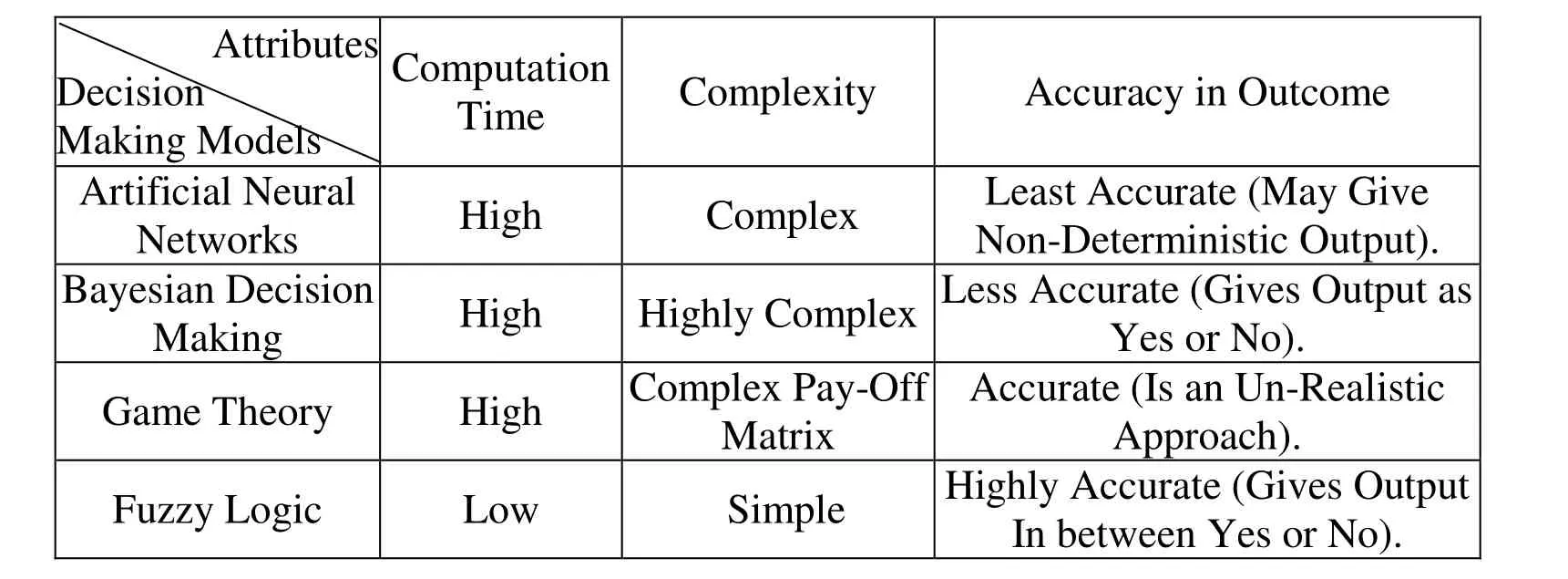
Table 1: Comparison of decision making models
3 Proposed framework and methodology
Figure 1. demonstrates the workflow of an automated employee performance appraisal system. This system comprises of 3 sections:
(1) Internet of Things Section.
(2) Data Processing Section.
(3) Decision Making section.Data Regarding industrial surroundings and Employee is collected via IoT devices. The collected data is then transformed by Data processing section into knowledge. The Knowledge so obtained is then analyzed to take decisions regarding employee performance using fuzzy logic approach. The detailed explanation of the system is as follows:

Figure 1: Proposed industrial employee performance appraisal system
3.1 Internet of things section
Iot devices installed in industrial infrastructure acquire data from the surroundings. The acquired data can be humidity monitoring, material theft, power consumption etc. For such an acquisition thermostats, sensors embedded with RFIDs, and other sensors are deployed.This section also attains the location of employees from GPS as well as automatically detects employee ID. Table 2 displays various IoI devices that are needed for detecting employee activities.
3.2 Data processing section
3.2.1 Data transformation block
This block collects data sensed by IoT devices, compares it with previous data and classifies it into 3 activity sets: Positive, Negative, and Neutral.Positive Activity set (PA) is a collection of all activities that are profitable to the industry.For example, accomplishment and sensible usage of water/ electricity are positive activities and together they form positive activity set. Negative Activity set (NA) is a collection of those activities that results into loss to industry. For example, material theft and information leakage are negative activities and together they form Negative Activity set. Neutral Activity Set (NUA) is a collection of neutral activities that are neither responsible for any profit nor any loss to the industry but are necessary for proper working of industry. An activity can be positive, negative or neutral. For instance, if water consumption level is high, then it is a negative activity, if it is low, then it is a positive activity, otherwise it is neutral. Table 8 demonstrates activity classification of some industrial activities.
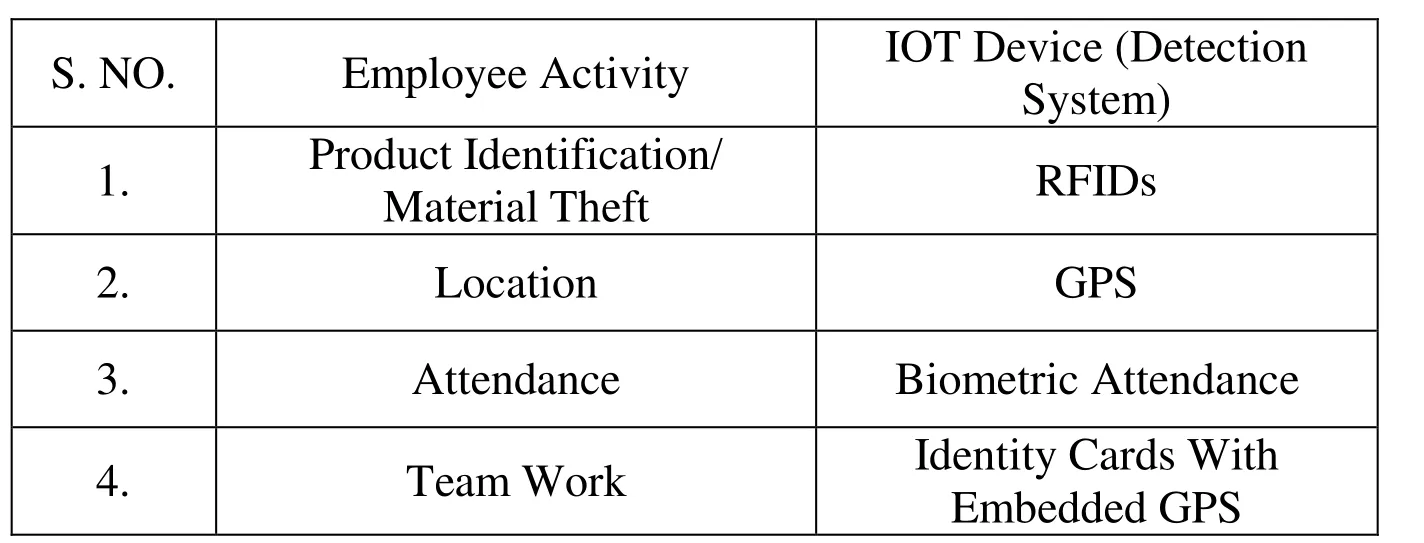
Table 2: IOT devices required for various employee activities.

Table 3: Activity classification of some industrial activities
Data transformation Block performs activity classification by first comparing the raw data gathered from IoT devices with the previous data stored in database. If recently fetched value is lower than the previous database value then it is a positive activity and the difference in two values gives profit, however if recently fetched value is higher than previous value then it is a negative activity and the difference in two values gives profit. On the other hand, if values lie close to each other then it is a neutral activity and there is no profit or loss.

Collection of all types (positive, negative, neutral) of Activities form Activity Set (A).
3.2.2 Employee performance appraisal block
Activity set from Data Transmission Block and Employee Location from Internet of Things section are two inputs of employee appraisal block. To execute this block Apache Spark is preferred as it is 100 times faster than Hadoop MapReduce. This block evaluates participation of employee in positive, negative, neutral activities. It is assumed that an employee participates in an activity if both employee and activity are co-located. For this participation Index (PI) [113] is calculated for all activity sets by using the equations:
For positive activity set:

For Negative activity set:

For Neutral activity set:

Participation index ranges from 0 to 1 since niX≤|X| where X can be PA, NAor NUA.
After calculating PI (Participating Index), overall Participation of employee in industrial activities is calculated by

The value of OPI ranges from 1 to – (1+φ), value of φ is industry dependent.
For calculating this range best and worst case are considered. In the best case employee will shows maximum involvement in positive activities and minimum in negative activities i.e PI(PA,i)=1 and PI(NA,i) =0 and PI(NUA,i)> φ because employee in this case will be involved in more neutral activities. So OPI = (1-0) =1. On the other hand, in worst case employee will shows maximum involvement in negative activities and minimum in positive activities i.e. PI(PA,i)=0 and PI( NA,i) =1 and PI ( NUA,i) = 0. So, OPI=(0-1-(φ-0))= -(1+ φ).

Table 4: Notations Used
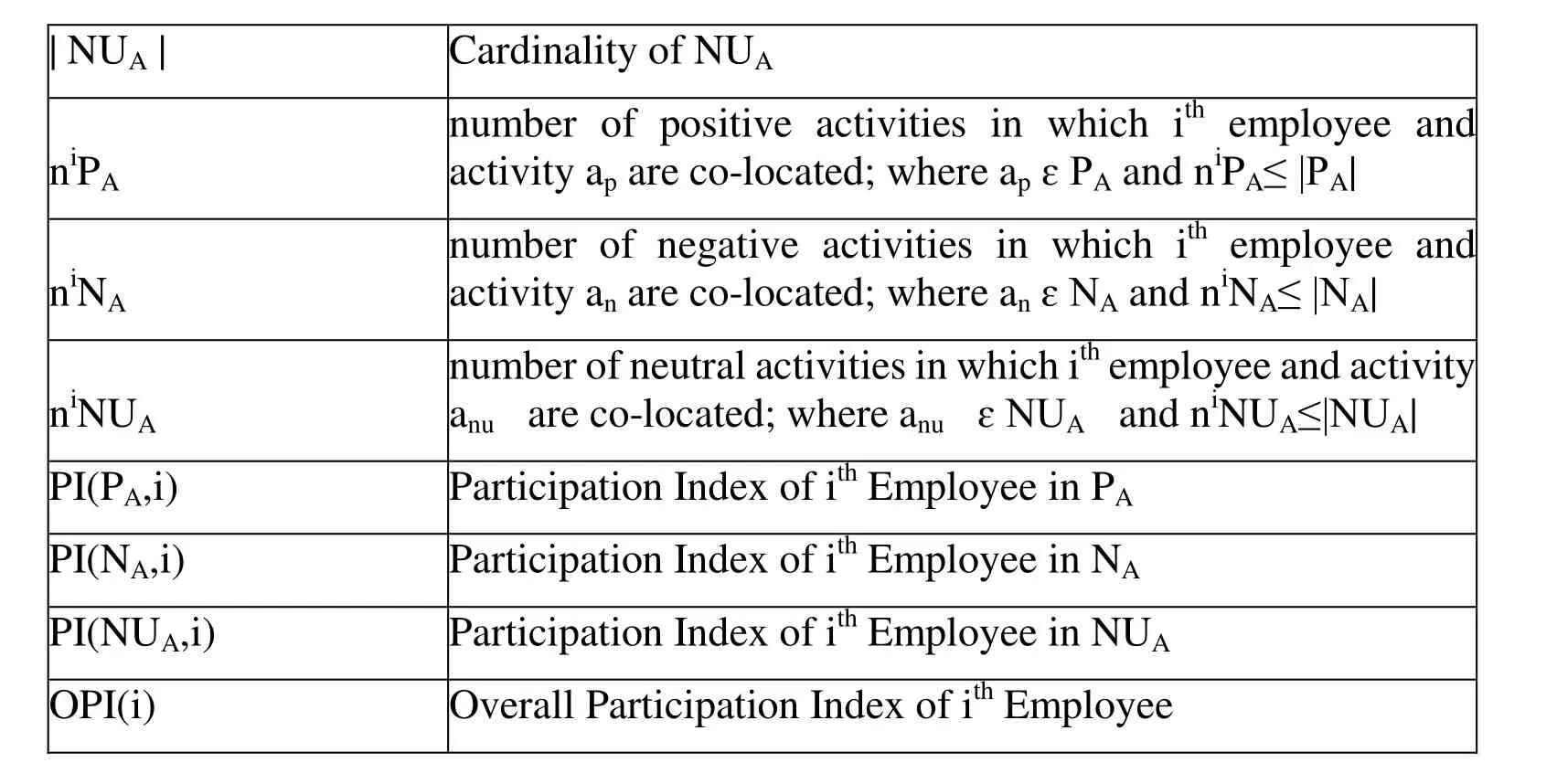
| NUA | Cardinality of NUA niPA number of positive activities in which ith employee and activity ap are co-located; where ap ɛ PA and niPA≤ |PA|niNA number of negative activities in which ith employee and activity an are co-located; where an ɛ NA and niNA≤ |NA|niNUA number of neutral activities in which ith employee and activity anu are co-located; where anu ɛ NUA and niNUA≤|NUA|PI(PA,i) Participation Index of ith Employee in PA PI(NA,i) Participation Index of ith Employee in NA PI(NUA,i) Participation Index of ith Employee in NUA OPI(i) Overall Participation Index of ith Employee
3.3 Decision making section
Decision making section automates industrial decision making process by using Fuzzy logic. This section will be implemented in Matrix Laboratory (MATLAB) platform.
3.3.1 Fuzzy decision making
STEP 1:Define input and output Linguistic variables and their numerical ranges. Input Linguistic variable:
· OPI- the value of OPI ranges from 1 to – (1+φ) Where; value of φ□ is industry dependent.
· Profit/ Loss (range 0-100)Output Linguistic Variable: DECISION: REWARD and PENALIZE.STEP 2:Construct membership functions for each linguistic variableSTEP 3:Construct Rule BASE
· If (OPI is high) and (profit is high) and (loss is low) then (decision is reward)
· If (OPI is low) and (profit is low) and (loss is high) then (decision is penalize)
· If (OPI is high) and (profit is low) and (loss is low) then (decision is penalize)
· If (OPI is high) and (profit is low) and (loss is high) then (decision is penalize)
· If (OPI is low) and (profit is low) and (loss is low) then (decision is penalize)
4 Experimental setup and results
4.1 Experimental setup
The experiment is carried out in a mining industry [C. Chen(2006)]. Flowchart below shows the scenario of mining industry and the activities that are carried out in this industry.The activities are classified into positive, negative and neutral classifications. The experiment was conducted by selecting 20 employees from a mining industry.

Figure 2: Mining activities carried out in mining Industry.
Table 5 shows the details of those selected employees, each employee is given a unique id.

Table 5: Employees selected for experiment
The experiment is carried out for three days.
Day 1:The objective of day 1 is to appraise the actual performance of employees and compare it with manual system. This experiment is performed without any notification to employees that they are being monitored this is because employees tend to perform better if they are informed beforehand. At the end of the day some employees are given rewards while others with low performance are penalized.
Day 2-3:The objective of these two days is to depict the effect of automated system on performance of employee. In this experiment employees are notified that they are being monitored by automated IoT system.
4.2 Results and discussions
Table 5 shows the detailed results acquired for the first three days of experiment. This table shows the values of OPI for each employee computed by the system. Threshold value taken here is 0.5.

Table 5: OPI values calculated by system for day 1-2-3
4.2.1 Comparison of manual system with Day 1 results
Table 6 shows the grades awarded to the employees calculated using Table 7. The numeric grading shown in table 6 is taken for comparison purposes because of discrepancy in grading practices followed by proposed and manual system. The manual appraisal system uses grading A+, A, B+, B and C for appraising employee performance while the proposed fuzzy system gives numerical value (OPI). Hence for comparison of these two systems,grading should be similar.
The manual grade is acquired from the filled performance appraisal forms which are leveraged in manual appraisal system. They are compared with day 1’s grade. As stated earlier, employees were not notified about monitoring through IoT systems on this day(day 1), so it depicts their actual performance. The comparison results are shown in Fig 3.It can be noticed from the figure that only three out of twenty employees are having same grade under both the systems. The other employees were either over evaluated or under evaluated.

Table 6: Statistical analysis of automated and manual grades
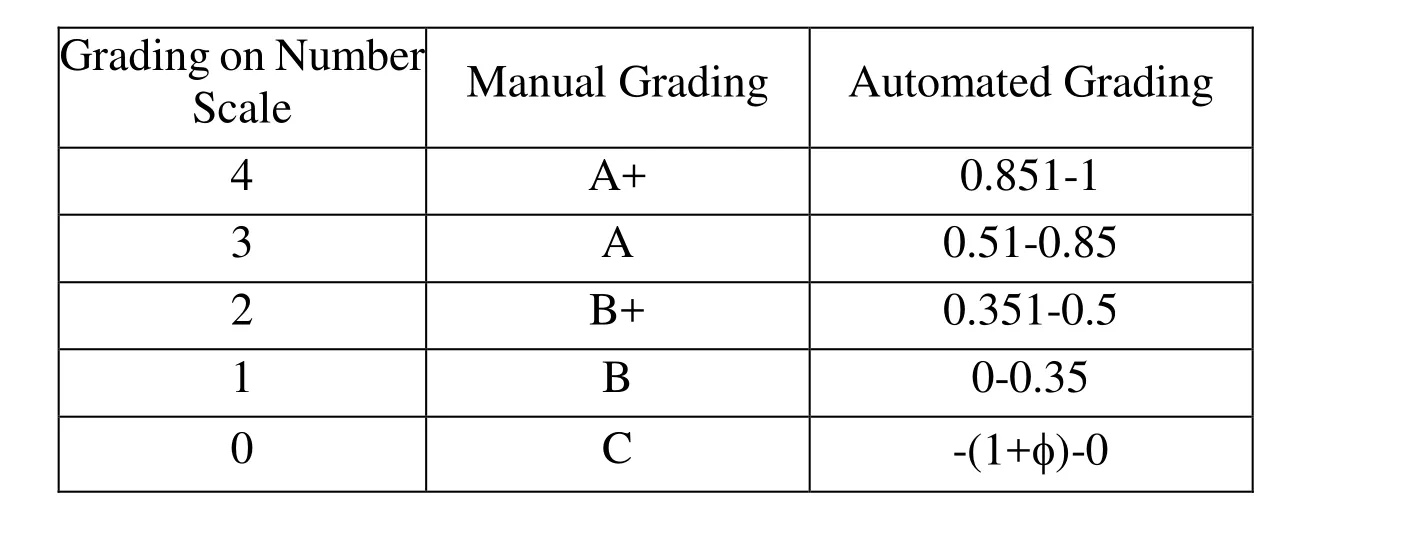
Table 7: Grading system
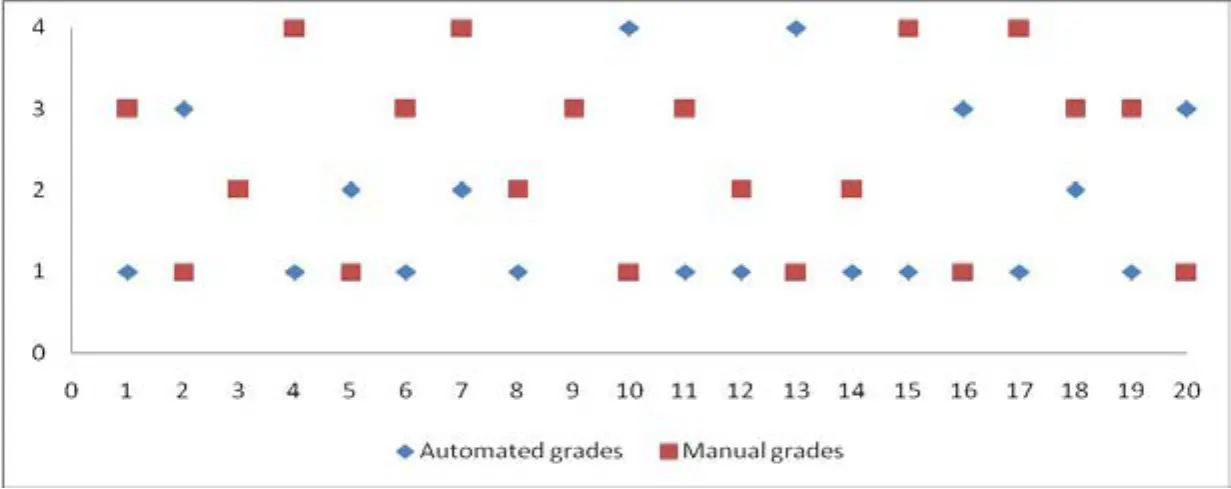
Figure 3: Comparison of grades of day 1 with manual system.
4.2.2 Comparison of results for day 1-2-3
The OPIs of all the employees for first three days of the experiment are shown in Table 5.Figure 4 demonstrates the comparison of performance of employees for day 1-3 on the basis of data shown in Table 5. It can be examined from the results that there is a sudden increase in performance of almost all the employees on day 2. The employees further upgraded their performance on day 3. This demonstrates that employees perform effectively when they are continuously monitored by an automated IoT system.
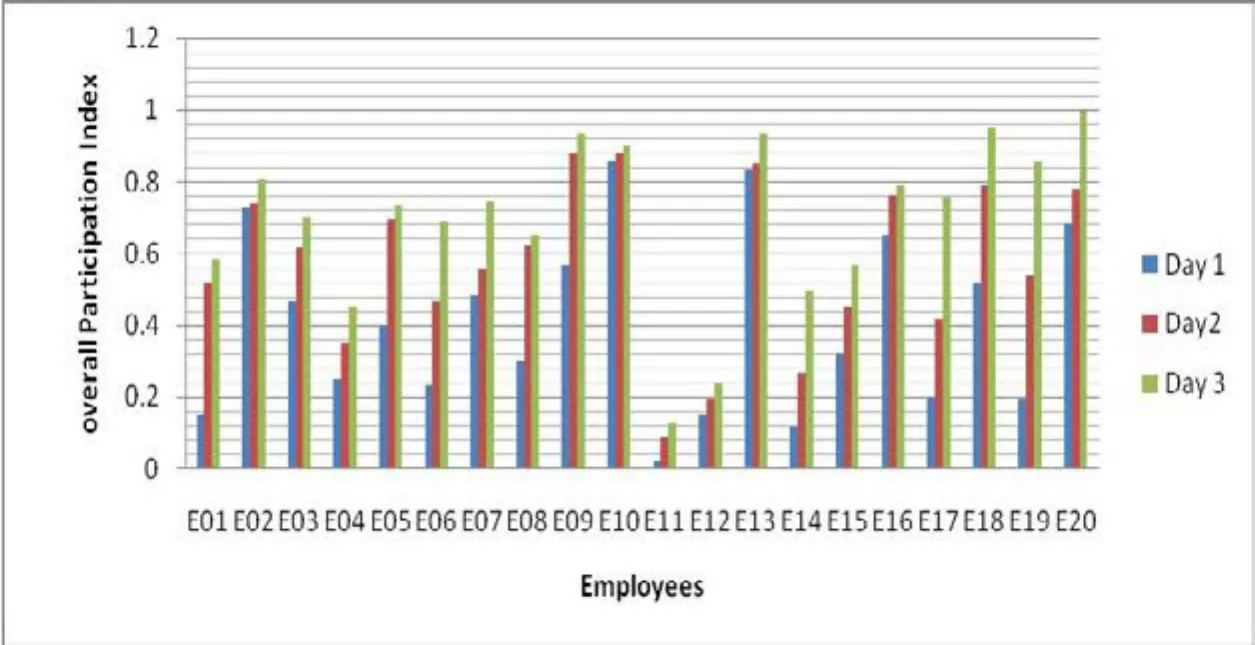
Figure 4: Performance comparison of twenty employees for three days.
4.2.3 Decision making using fuzzy logic approach
The OPI values so obtained can be applied to make reward or penalty decision using fuzzy logic approach. Figure 5 shows the membership values defined for input and output of fuzzy logic system.
Decision Membership functions:

Figure 5: Membership functions for decision
Surface View:
Figure 6 shows the relation between various input (OPI, Profit, Loss) and output(Decision).

Figure 6: Relation between input and output
4.3 Evaluation of employees performance
The results in figure 7 shows how an employee’s performance can be evaluated and decision can be taken regarding reward or penalty. A high OPI value of 0.503, profit of 72 and loss of 18.8 results into a decision= 75.3 which is a high value on the scale of 0 - 100.So the employee is rewarded by the industry.
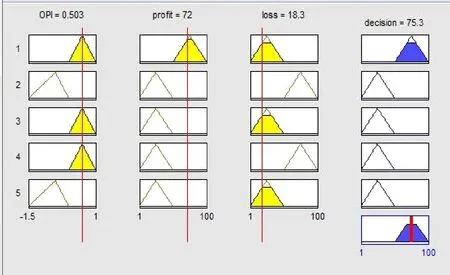
Figure 7: Evaluation of Employees Performance and decision is made on the basis of OPI value, a high OPI value indicates the best performance of employee and considered for reward.
5 Conclusions
By leveraging the proposed framework, Industries will be able to increase employee morale and hence make profit from it. The decision regarding rewarding the best employee is based on the IoT data such as employee’s location, accomplishment, Team work etc.,processing this data to calculate overall participation Index of employee in association to positive, negative and neutral activity. The index, profit and loss so obtained can be used for making decision using fuzzy logic. Fuzzy logic defines membership values to take accurate decision. The proposed system is capable of eliminating favoritisms,discriminatory, dissatisfaction among employees which in turn is capable of earning profit for industry. Future work can be deployed in various decision making processes of diverse industries such as supply chain, university/School staff evaluation, Mining and any more.
Intartaglio, R.:Evaluation of the need for a performance appraisal system for the South Trial Fire Department. Nat. Fire Academy, Fort Myers, FL, USA, Appl. Res. Rep., (2000)Available: http://www.usfa.fema.gov/pdf/efop/efo14655.pdf
Strauss, D. J.:A subjective merit review system. IRE Trans. Eng. Manage. (1958)141–143.
Tsai, C.W., Lai, C.F., Chiang, M.C., Yang, L.T.:Data mining for internet of things: a survey. IEEE Commun. Surv. Tutorials. 16 (2014) 77–97.
Kim, S. K., Lee, J. H., Ryo, K. H., Kim, U.:A framework of spatial co-location pattern mining for ubiquitous GIS. Multimedia Tools Appl. 71 (2014) 199–218.
Rashidi, P., Cook, D. J., Holder, L. B., Edgecombe, M. S.:Discovering activities to recognize and track in smart environment. IEEE Trans. Knowl. Data Eng. 23(2011)527–539.
Schlesinger, M., Parisi, D.:The agent-based approach: A new direction for computational models of development. Develop. Rev. 21 (2001) 121–146.
Lee, S.-H., Yang, K.-M., Cho, S.-B.:Integrated modular Bayesian networks with selective inference for context-aware decision making. Neurocomputing. 163 (2015)38-46.
Mese, E., Torrey, D. A.:An approach for sensorless position estimation for switched reluctance motors using artifical neural networks. IEEE Transactions on Power Electronics.17 (2002) 66-75.
J. R. S. Cristóba,"Cost Allocation between Activities that have Caused Delays in a Project Using Game Theory,"Procedia Technology,vol. 16, pp.1017-1026, 2014.
Aló, R., Korvin, A. D., Modave, F.:Fuzzy functions to select an optimal action in decision theory in Fuzzy Information Processing Society, 2002. Proceedings. NAFIPS.2002 Annual Meeting of the North American (2002) 348-353.
Arshad, M., Islam, S., Khaliq, A.:Fuzzy logic approach in power transformers management and decision making. IEEE Transactions on Dielectrics and Electrical Insulation. 21(2014) 2343-2354.
Wu, Q., Ding, G., Xu, Y., Feng, S., Du, Z., Wang, J., Long, K.:Cognitive internet of things: a new paradigm beyond connection. IEEE Internet Things Journal. 1 (2014)129–143.
Kaur, N., Sood, S. K.A Game Theoretic Approach for an IoT-Based Automated Employee Performance Evaluation. IEEE Systems Journal, in press.
Da Xu L, He W, Li S.Internet of things in industries: a survey. Industrial Informatics,IEEE Transactions on. 2014 Nov;10(4):2233-43.
Kaliczyńska M, Dąbek P.Value of the Internet of Things for the Industry–An Overview.InMechatronics-Ideas for Industrial Application 2015 (pp. 51-63). Springer International Publishing.
Li W, Pi C, Han M, Ran C, Chen W, Ke P.A scheduling method for IOT-aided packaging and printing manufacturing system. InHeterogeneous Networking for Quality,Reliability, Security and Robustness (QSHINE), 2015 11th International Conference on 2015 Aug 19 (pp. 335-340). IEEE.
Khaleel H, Conzon D, Kasinathan P, Brizzi P, Pastrone C, Pramudianto F,Eisenhauer M, Cultrona PA, Rusina F, Lukac G, Paralic M.Heterogeneous Applications, Tools, and Methodologies in the Car Manufacturing Industry Through an IoT Approach.2015: 1-1.
Ondemir O, Gupta SM.Quality management in product recovery using the internet of things: an optimization approach. Computers in Industry. 2014 Apr 30;65(3):491-504.
Kunkun P, Xiangong L.Reliability Evaluation of Coal Mine Internet of Things.InIdentification, Information and Knowledge in the Internet of Things (IIKI), 2014 International Conference on 2014 Oct 17 (pp. 301-302). IEEE.
C. chen,The Iron Ore Company of Canada (2006) [Online]. Available http://www.cim.org/en/Publications-and-Technical-Resources/Publications/CIM-Magazi ne/March-April-2006/features/The-Iron-Ore-Company-of-Canada.asp
1Guru Nanak Dev University, Amritsar, Punjab India.
2Guru Nanak Dev University, Amritsar, Punjab India
杂志排行
Computers Materials&Continua的其它文章
- Forced and Natural Vibrations of an Orthotropic Pre-Stressed Rectangular Plate with Neighboring Two Cylindrical Cavities
- Bus Encoded LUT Multiplier for Portable Biomedical Therapeutic Devices
- Rotational Effect on thermoelastic Stoneley, Love and Rayleigh waves in Fibre-reinforced Anisotropic General Viscoelastic Media of Higher Order
